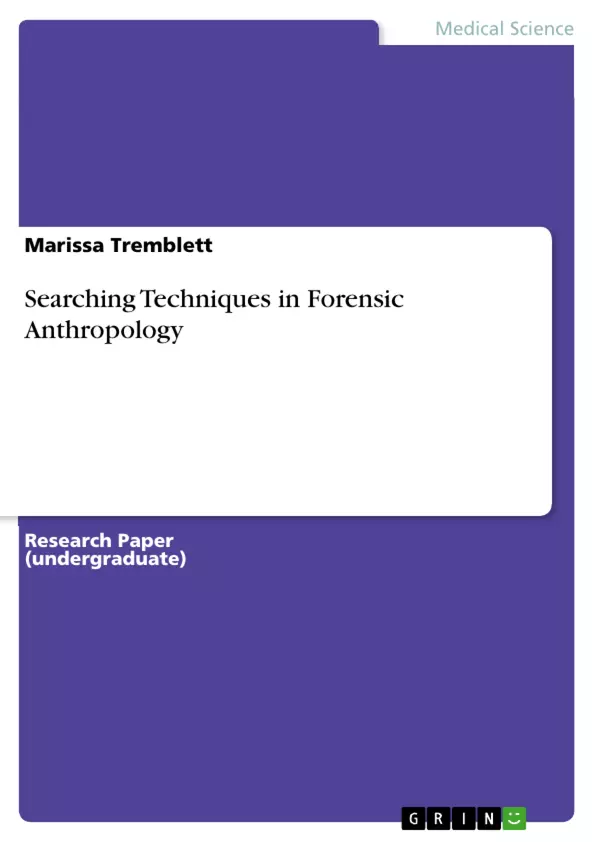This report reviews the literature on the techniques used to locate human remains and clandestine graves that are used by forensic anthropologists and investigators. This paper critically examines multiple techniques including Human Remains Detection Dogs, Ground Penetrating Radar, Resistivity Surveys, Remote Sensing, Probing, Taphonomy, Soil Gas
Survey and Civilian searches, to determine their advantages, disadvantages, reliability and credibility in locating clandestine graves. There is currently no one method that is successful in every condition and geographical location. But with the development of technology and with a multidisciplinary approach, researchers will be able to develop a method that will work in every condition in all geographical locations, help bettering law enforcement.
Inhaltsverzeichnis (Table of Contents)
- Introduction
- Canines
- Geophysical
- Natural Methods
- Human Searches
- Conclusion
- References
Zielsetzung und Themenschwerpunkte (Objectives and Key Themes)
This paper reviews the literature on various techniques used by forensic anthropologists and investigators to locate human remains and clandestine graves. The primary objective is to critically examine the advantages, disadvantages, reliability, and credibility of different methods. This review aims to assess the effectiveness of these techniques in locating clandestine graves, considering factors like technological advancements and multidisciplinary approaches.
- Forensic anthropological search techniques for human remains and clandestine graves.
- Advantages, disadvantages, reliability, and credibility of different search methods.
- Technological advancements and multidisciplinary approaches in forensic anthropology.
- The role of human remains detection dogs in locating clandestine graves.
- The application of decompositional odor analysis in forensic investigations.
Zusammenfassung der Kapitel (Chapter Summaries)
- Introduction: This chapter provides an overview of the paper's focus on forensic anthropological search techniques for human remains and clandestine graves. It highlights the importance of locating these graves for solving crimes and bringing perpetrators to justice.
- Canines: This chapter delves into the use of human remains detection dogs (HRD dogs) as a reliable technique for locating human remains and clandestine graves. The chapter discusses the advantages of HRD dogs, including their highly sensitive sense of smell, but also addresses the challenges of false alerts and the importance of training and standardization.
- Geophysical: This chapter explores various geophysical techniques, such as ground-penetrating radar and resistivity surveys, used for locating clandestine graves. It highlights the potential and limitations of these methods in different geographical conditions.
- Natural Methods: This chapter focuses on natural methods like taphonomy and soil gas surveys that are used in the search for human remains. It examines the principles behind these methods and their effectiveness in various scenarios.
Schlüsselwörter (Keywords)
This review paper focuses on the techniques used in forensic anthropology to locate human remains and clandestine graves. The main keywords and focus topics include: forensic anthropology, clandestine graves, human remains detection dogs, ground-penetrating radar, resistivity surveys, taphonomy, soil gas surveys, decompositional odor analysis, volatile organic compounds (VOCs), Scent Transfer Unit (STU-100), Triple Sorbent Traps (TSTs), and the Spiking method.
- Arbeit zitieren
- Marissa Tremblett (Autor:in), 2014, Searching Techniques in Forensic Anthropology, München, GRIN Verlag, https://www.hausarbeiten.de/document/275643


